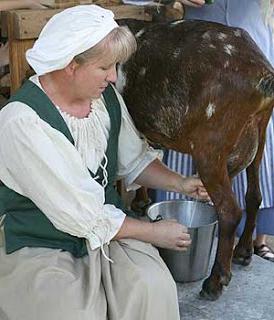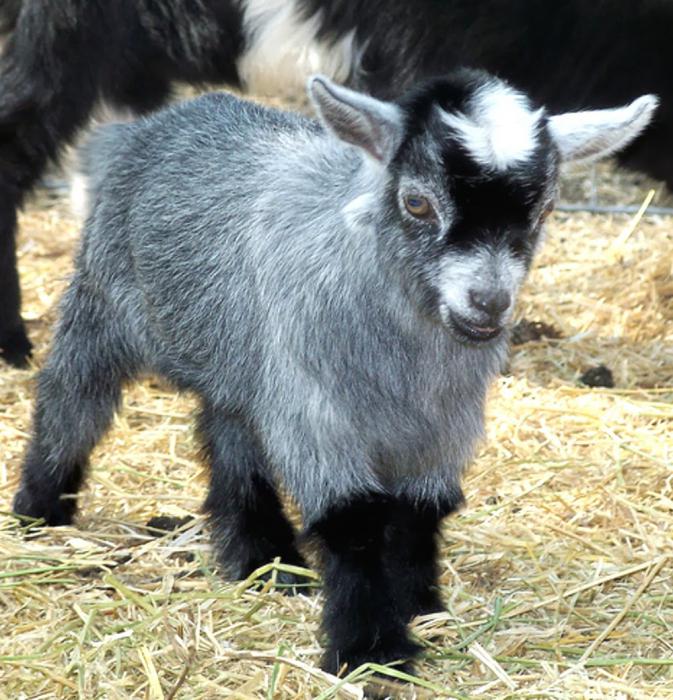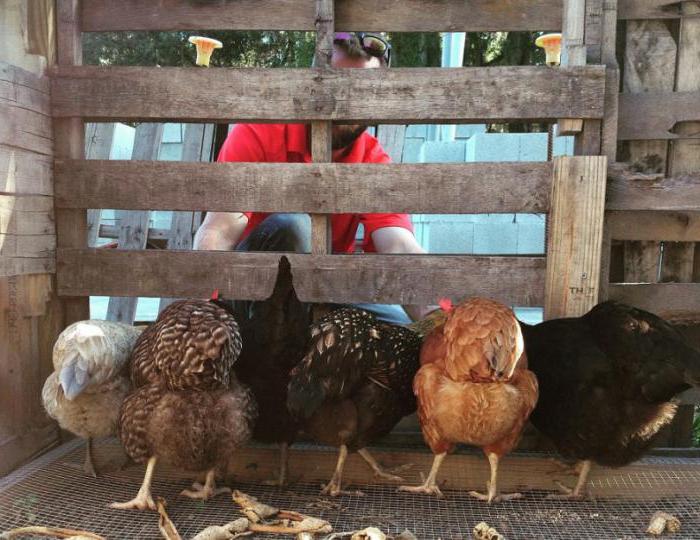Breeding of goats on personal farmstead as a business
The breeding of goats on a personal farmstead is gaining popularity among the population. These animals in the subsidiary farm are always fresh milk, tasty yogurt, snow-white and airy oil.
Why is it recommended to breed goats on a home farmstead?
This is a fairly inexpensive and payback waydaily to have on the dinner table fresh milk, at its value equated to the mother. There are many examples where mothers, in the absence of their own milk, fed the children with goat, rich in mineral salts. The opinion of most people about his bad taste and specific smell is wrong. The fat content of goat's milk, which can be stored for a long time even without a refrigerator, is 4-6% higher than cow's milk. A significant amount of biologically active potassium has a positive effect on the cardiovascular system and promotes the rejuvenation of the body.

Kefir, yogurt, cottage cheese, cheese, butter - productsown preparation, which will always be a useful addition to the usual family ration. Breeding goats on a personal farmstead as a business, in addition to the side income from the sale of dairy products, brings satisfaction and joy in dealing with these friendly, faithful animals.
How to choose the right goat?
To do this, you just need to be able to choose the right oneGoat, guided by such criteria as physique, age and the purpose of keeping a pet. If a goat is required to produce dairy products, then the choice should be stopped on dairy breeds (Zaanen, Nubian, Alpine, Toggenburg). During examination, special attention is required to be given to the udder of the animal; it should be pear-shaped, bulky and soft to the touch.

Breeding goats on a personal farmstead to receive andsales of meat can also be very profitable business, in which it is desirable to choose to stop on meat breeds: Greek, Bourg, Kiko. Meat from them of high quality and resembles veal to taste.
The goat can also be kept for production of wool andfluff (a special kind of wool raw material, which has no analogues in quality and technological properties). In this case, the most suitable breeds are Angora, Orenburg, and Mountain Altai, from which soft mohair is produced by a popular mohair. Milk in comparison with other breeds such goats give less: only 0.5-1 liter per day.
A by-product of goats content is manure - a high-quality fertilizer for vegetable gardens, homestead lands and greenhouses.
Optimal selection of local breeds,maximally adapted to the peculiarities of the climate of your region. Moreover, popular breeds without proper care and high-quality feed may not meet the corresponding performance indicators.
Signs of a good goat
A good goat should have a broad chest, a healthy onebackbone, straight legs. It is worth paying attention to the jaw. They must fit tightly with each other. Otherwise, the animal will not be able to grab the food with its teeth and bite the grass, which will negatively affect its productivity.

Breeding goats - an economical occupation
Breeding goats on a personal farmstead is very convenientand a low-cost kind of home business. These animals are unpretentious and optimally adapt to different conditions of detention. Their valuable biological feature is early puberty; one goat usually brings one to two (sometimes three) cubs. Growing young growth can be allowed for meat, tasty and low-fat, it is very important not to over-bust it, because an adult goat, aged 1.5 years, produces an unpleasant smell.
Arrangement of premises for goats
Goats on personal farmstead are undemandinganimals, so their breeding can be practiced in almost all climatic zones and, unlike cattle, even contain on small farmsteads with small farm buildings.

Breeding of goats on personal farmstead: feeding
For the feeding of goats optimal food is consideredFresh grass, which is also the cheapest food, due to which there is a significant increase in milk yields. Therefore, in the summer, animals must be taken out for grazing, where they independently feed themselves. In the evening, they should be fed with root crops, potatoes, vegetables, grain, pre-harvested branches from shrubs or coniferous trees.
Contents of goats in winter
More should also be given mineralelements and vitamins during the goat's pregnancy. Breeding of these domestic animals on their farmstead requires the investment of their own labor, namely the preliminary harvesting of hay, which is the main food in the winter.
It is not recommended to use for hay preparationherbs that give bitterness and smell of milk (tansy, chamomile, horsetail, wormwood and mustard). As an additional food, the animals are given dried brooms from branches of trees and shrubs, it is useful in the cold period to feed them with needles. As a swill they make bryozoans that significantly increase milk yields, for the preparation of which kitchen waste, dried bread remnants, beet, carrot cleaning, steamed oats or bran are mixed with warm water.

In winter, goats need to be strolled to increase appetite, and also reduce the risk of hoof disease.
Water in goats should always be available and have room temperature. In the trough it is recommended to add salt-licking, in case of its absence, it is required to simply add salt.
We raise goats on a personal farmstead
Offspring of goats are desirable to acquire earlyin the spring. Born exactly during this period, goat kids are the most developed and strong. For this, mating is required in September-October. Goats can happen when they reach 1.5 years; mating is allowed from the age of 7 months, very desirable - with an unrelated goat for obtaining quality non-hybrid offspring. In households, the massive offspring is mainly observed in March. Usually by the autumn the kids are already well developed. Samochek sold in other farms or left as a replacement for old queens, goats are sold for meat or grown to replace the goat-producer. To avoid relative breeding, it is preferable to exchange young animals with other farmers.
The first days of newborn babies should be drunkcolostrum, then for a month to feed 4 times a day with liquid oatmeal or semolina porridge (on milk) with the subsequent transition to three meals a day.

7-9 years - the average duration of use of a goat on a personal farmstead.
Breeding goats on a personal farmstead is economically advantageous because of the low cost and peace-loving nature of these clean and friendly animals.





